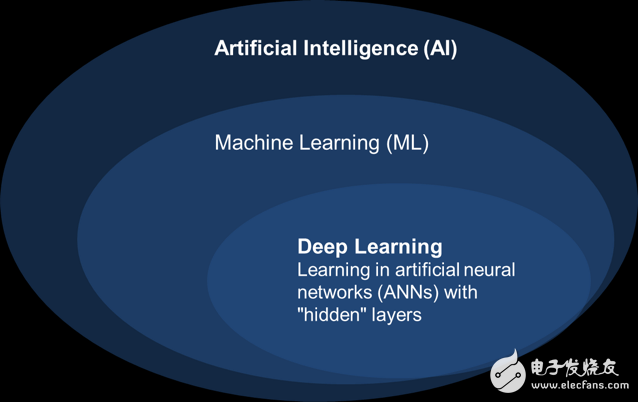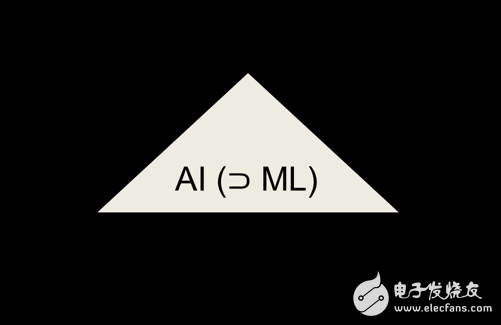Abstract: This article provides an introduction to the fundamental concepts of machine learning, explaining what it is, what it can achieve, and how it works. The following is a detailed explanation and elaboration of these ideas.
Over the past few months, I've had many conversations with business leaders about artificial intelligence, especially machine learning. Several of them have been asked by investors about their strategies in this field and where they are applying machine learning within their organizations. So why has this technical topic suddenly become a major concern for company executives?
The core purpose of computers has always been to help humans solve problems. Traditionally, we write programs that tell the computer exactly how to perform a task—essentially teaching the algorithm step by step, like a recipe. Many tasks, such as basic arithmetic, can be clearly defined by algorithms. Computers are even faster and more accurate at executing these tasks than humans.

However, not all problems can be solved this way. For example, how do we teach a computer to recognize a cat in a photo? At first glance, it seems simple, but describing this task through traditional algorithms is extremely challenging. Even basic features like “four legs†or “two eyes†may not always be visible or consistent. If we try to detect just a leg or an eye, the problem becomes just as complex as identifying a full cat.
This is where machine learning shines. Instead of writing explicit instructions, the computer learns from examples. In the case of cat recognition, we train the system using thousands of images of cats. Through this process, the algorithm gradually improves and eventually learns to identify a cat in a new, unseen image.

In fact, the computer doesn’t just learn a set of rules or parameters—it builds a model that’s hard to interpret, much like the human brain. These models, often based on neural networks, are complex and not easily understood by humans, yet they can perform powerful tasks.

One particularly successful approach is deep learning, a subset of machine learning. It's used in many real-world applications, such as image recognition. In 2012, Google trained a massive network using 10 million YouTube videos and successfully identified cats and other objects—an early milestone in deep learning.

Many real-world challenges fall into the category of "recognizing cats" rather than "adding numbers." These are pattern recognition tasks—like detecting objects in images, understanding language, or spotting fraud in financial data. Solving them with traditional programming is often impractical.
Take predictive maintenance as an example. Sensors generate continuous streams of data, and sometimes machines fail unexpectedly. By analyzing historical data, machine learning can detect patterns that precede failure, allowing systems to predict and prevent issues before they occur.
Although the concept of machine learning isn't new, it's now gaining widespread attention for three key reasons: the availability of large datasets ("big data"), increased computing power (especially in the cloud), and the rise of open-source tools that make machine learning accessible to more people.

Machine learning isn't meant to replace traditional programming, but to complement it. It offers powerful tools for solving complex problems that were previously difficult or impossible to address. As a result, many existing systems are being enhanced with machine learning capabilities, leading to greater efficiency and automation.
For instance, consider repetitive tasks. Imagine a software program with hundreds of functions, but only a few are used daily. By observing user behavior, the system can learn to predict next steps, making interactions faster and smoother. This kind of learning helps automate routine actions and improve user experience.
Machine learning is also transforming various fields. From personalized education in MOOCs to early disease detection, targeted marketing, customer churn prediction, data quality analysis, and even matchmaking services, its applications are vast and growing rapidly.

Tools like Apache Spark, integrated into Hadoop, have made machine learning more accessible and efficient. Platforms like Talend are also evolving, helping abstract complexity and reduce dependencies on fast-changing technologies.
While only a few experts need to deeply understand the algorithms, it's beneficial for everyone to grasp the basic idea: machine learning is about finding patterns in data and applying them to new situations. This capability allows machines to make decisions autonomously, which is a game-changer in both business and everyday life.
In conclusion, machine learning is expanding the range of problems that computers can solve, enabling automation in ways that were once unimaginable. Whether through improved decision-making or enhanced efficiency, it's reshaping industries and offering exciting new possibilities for the future.
Zinc selenide (ZnSe) is a very good infrared material with a wide range of light transmission, from 0.5 microns to 19 microns. Because zinc selenide has a very low absorption coefficient in the 1064nm band, has good imaging characteristics and thermal shock characteristics, it is often used as a lens and window for carbon dioxide lasers. At the same time, the excellent optical properties of zinc selenide lenses are also widely used as windows, optical lenses and Optical Prisms of high-definition forward-looking infrared systems.
Laser Focusing Lens,Optical Lasers,Laser Lens,Lasers In Optics
Changchun Realpoo Photoelectric Co., Ltd. , https://www.optics-realpoo.com
